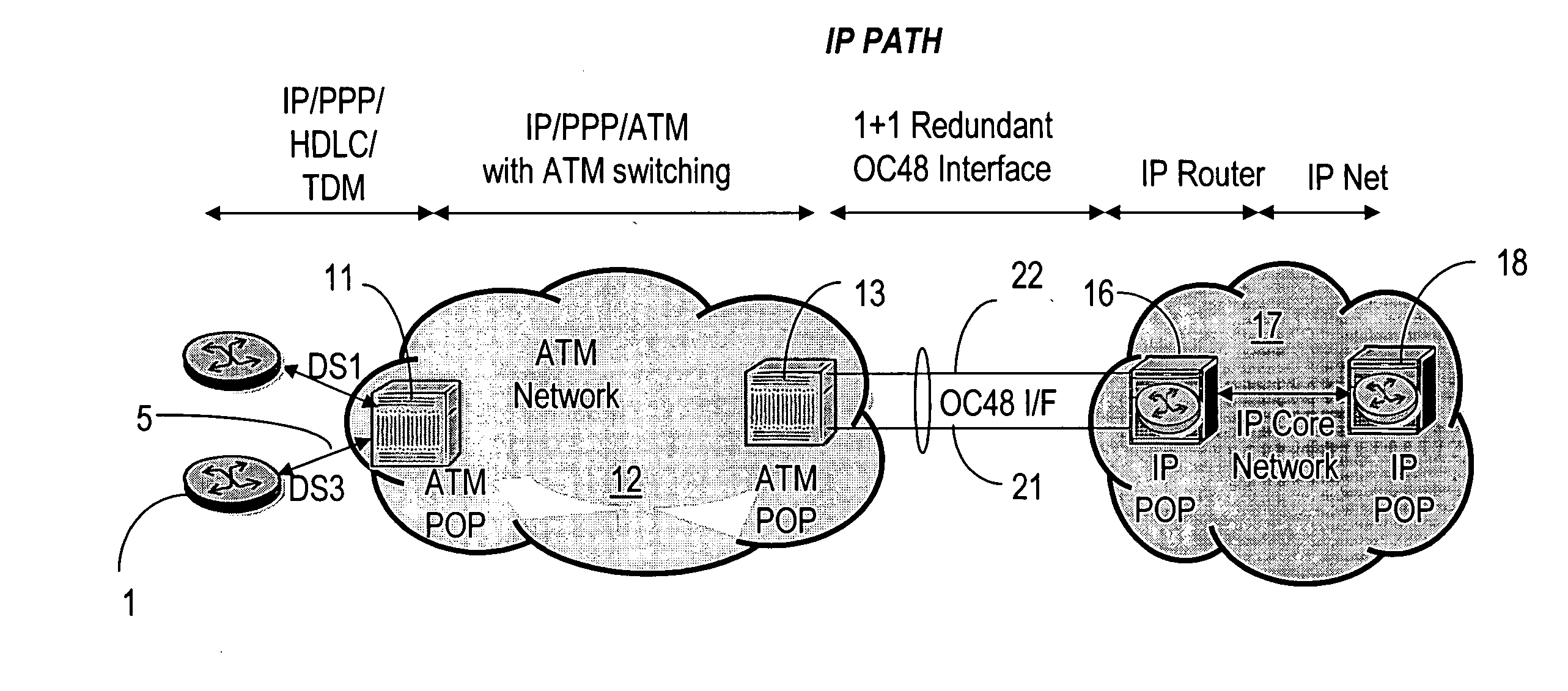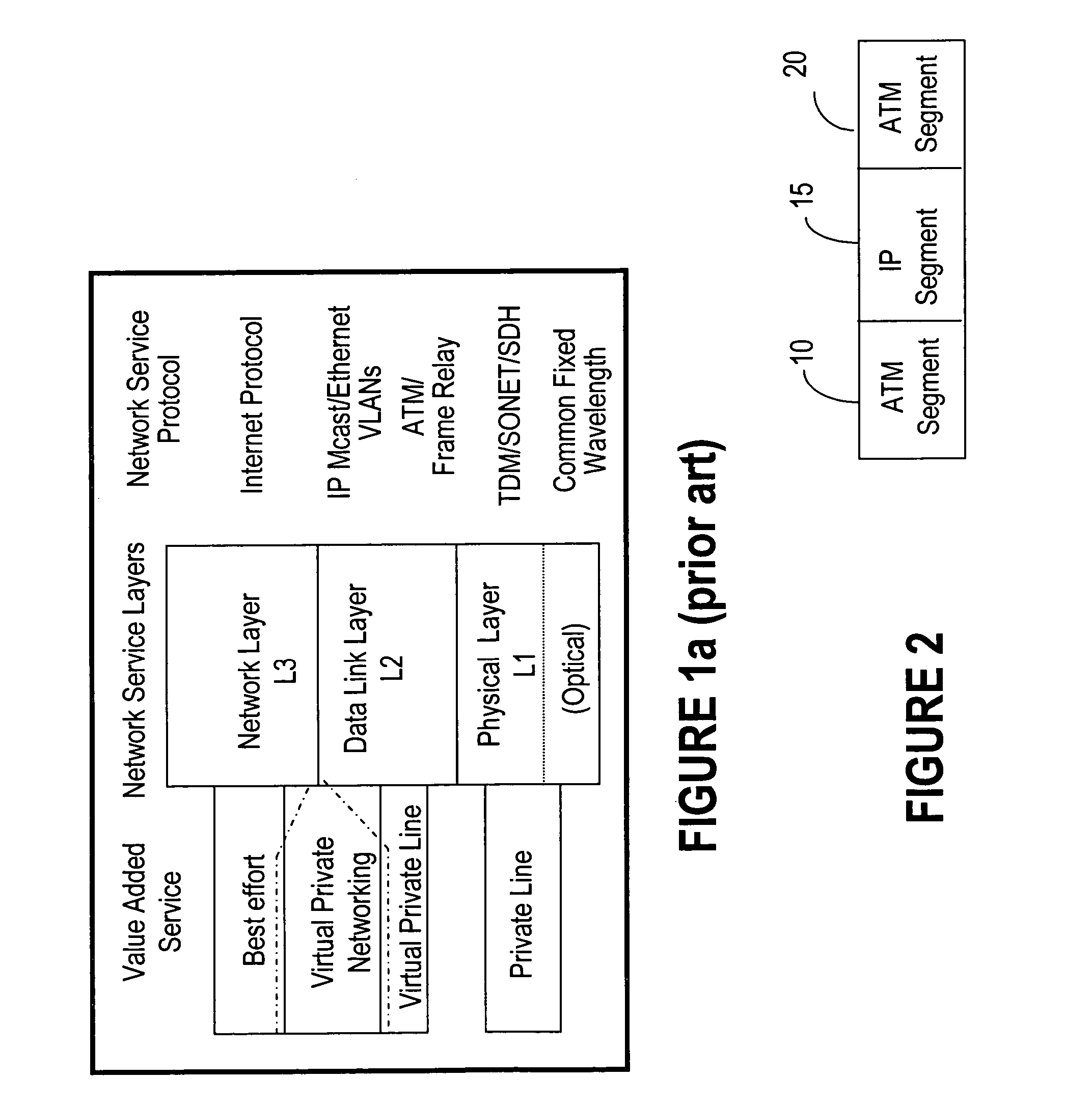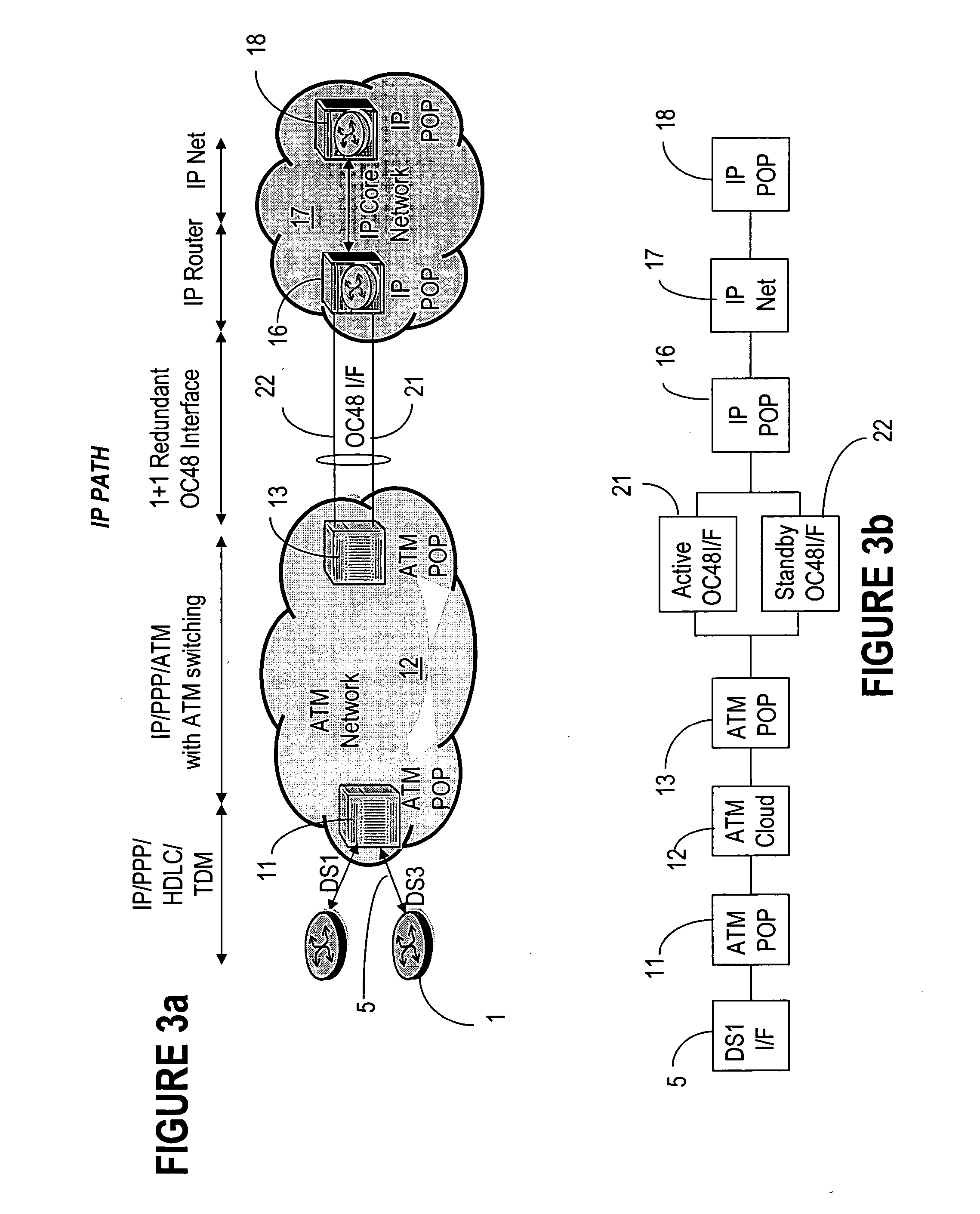Method of networking systems reliability estimation
a networking system and reliability estimation technology, applied in the field of communication networks, can solve the problems of difficult comprehensive estimation of network performance needed for enforcing a certain sla, time-consuming and expensive, etc., and achieve the effect of broad application in the field of telecom
- Summary
- Abstract
- Description
- Claims
- Application Information
AI Technical Summary
Benefits of technology
Problems solved by technology
Method used
Image
Examples
Embodiment Construction
[0029] Availability is defined here as the probability that a networking system performs its expected functions within a given period of time. The term reliability is defined here as the probability that a system operates correctly within a given period of time, and dependability refers to the trustworthiness of a system. In this description, the term “reliability parameter” is used for a network operational parameter defining the performance of the networking system vis-à-vis meeting a certain SLA, such as rerouting delays, or resources utilization (e.g. bandwidth utilization). The terms “estimated parameter” and “contractual parameter” are used for designating the value of the respective parameter estimated with the method according to the invention, or the value of the parameter agreed-upon and stated in the SLA. The term “measure” is used for the value of a selected performance parameter.
[0030]FIG. 1 shows the correspondence between data communication based services, the networ...
PUM
 Login to View More
Login to View More Abstract
Description
Claims
Application Information
 Login to View More
Login to View More - R&D
- Intellectual Property
- Life Sciences
- Materials
- Tech Scout
- Unparalleled Data Quality
- Higher Quality Content
- 60% Fewer Hallucinations
Browse by: Latest US Patents, China's latest patents, Technical Efficacy Thesaurus, Application Domain, Technology Topic, Popular Technical Reports.
© 2025 PatSnap. All rights reserved.Legal|Privacy policy|Modern Slavery Act Transparency Statement|Sitemap|About US| Contact US: help@patsnap.com



